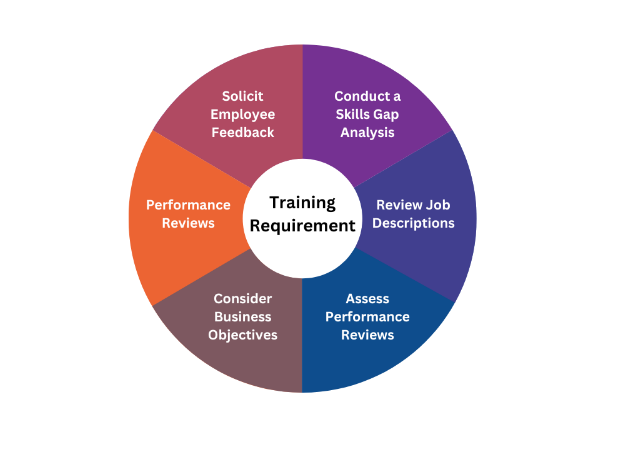Predicting Employee performance
Predicting employee performance is an important part of talent management and can help organizations identify high performers, develop talent, and make informed decisions about hiring and promotion. Here are some methods to predict employee performance:
Employee Assessments: Employee assessments such as personality tests, cognitive ability tests, and job-specific skills tests can help predict employee performance. These assessments can provide valuable information about a candidate’s strengths, weaknesses, and potential for success in a given role.
Past Performance: Looking at an employee’s past performance can provide insight into their potential future performance. Performance reviews, metrics, and feedback from managers can help identify high performers and areas for improvement.
Competency Frameworks: Competency frameworks define the knowledge, skills, and behaviors required for success in a given role. Using competency frameworks to assess candidates can help predict their potential for success in the role.
Job Simulations: Job simulations provide a realistic preview of what the job will be like and can help predict how well a candidate will perform. This can include role plays, case studies, and other exercises that simulate real-world scenarios.
Reference Checks: Checking references can provide insight into a candidate’s past performance, work habits, and potential for success in the role. It is important to ask questions that are job-related and relevant to the candidate’s potential for success in the role.
Overall, predicting employee performance requires a combination of methods that assess a candidate’s skills, knowledge, and potential for success in the role. By using a combination of methods such as employee assessments, past performance, competency frameworks, job simulations, and reference checks, organizations can make informed decisions about talent management and identify high performers.
Training Requirement
Identifying training requirements is an important part of talent management and can help organizations develop and retain their workforce. Here are some steps to identify training requirements:
Conduct a Skills Gap Analysis: A skills gap analysis can help identify where employees lack the necessary skills or knowledge to perform their jobs effectively. This can be done through surveys, interviews, or observations of employees on the job.
Review Job Descriptions: Reviewing job descriptions can help identify the required skills and knowledge for each job role. This can help identify training needs for new hires, as well as existing employees who may need additional training to perform their job effectively.
Assess Performance Reviews: Performance reviews can help identify areas for improvement and where employees may need additional training or development. Feedback from managers and colleagues can also be used to identify training needs.
Consider Business Objectives: Identifying business objectives and goals can help identify training needs for employees. For example, if the organization plans to expand into a new market, employees may need training on new products or services, or cultural awareness training if operating in a different country.
Solicit Employee Feedback: Employees can provide valuable feedback on their own training needs. Employee surveys or focus groups can be conducted to identify areas where employees feel they need additional training or development.

Overall, identifying training requirements requires a thorough assessment of job roles, employee skills and knowledge, performance reviews, business objectives, and employee feedback. By identifying training requirements, organizations can develop targeted training programs that address specific needs and help employees develop the skills and knowledge required to perform their jobs effectively.
Optimizing selection and Promotion decision
Optimizing selection and promotion decisions is essential for organizations to identify and develop top talent. Here are some steps to optimize selection and promotion decisions:
Define Job Competencies: Defining job competencies and the knowledge, skills, and behaviors required for success in the role can help ensure that selection and promotion decisions are based on objective criteria. Competencies should be based on job analysis and align with the organization’s goals and values.
Use Multiple Assessment Methods: Using multiple assessment methods such as interviews, assessments, and job simulations can help ensure that selection and promotion decisions are based on a comprehensive evaluation of a candidate’s skills, knowledge, and potential for success in the role.
Standardize the Process: Standardizing the selection and promotion process can help ensure that all candidates are evaluated using the same criteria and process. This can help eliminate bias and ensure that decisions are based on objective criteria.
Involve Multiple Evaluators: Involving multiple evaluators, such as managers and peers, in the selection and promotion process can help ensure that decisions are based on a comprehensive evaluation of a candidate’s skills, knowledge, and potential for success in the role.
Provide Feedback: Providing feedback to candidates on their performance in the selection and promotion process can help them understand their strengths and areas for improvement. This can also help them develop a plan for professional development and increase their engagement and commitment to the organization.
Overall, optimizing selection and promotion decisions requires a comprehensive evaluation of a candidate’s skills, knowledge, and potential for success in the role. By defining job competencies, using multiple assessment methods, standardizing the process, involving multiple evaluators, and providing feedback, organizations can identify and develop top talent and improve their talent management practices.